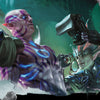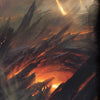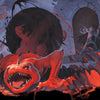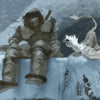Every Character Sheet Should Look Like This
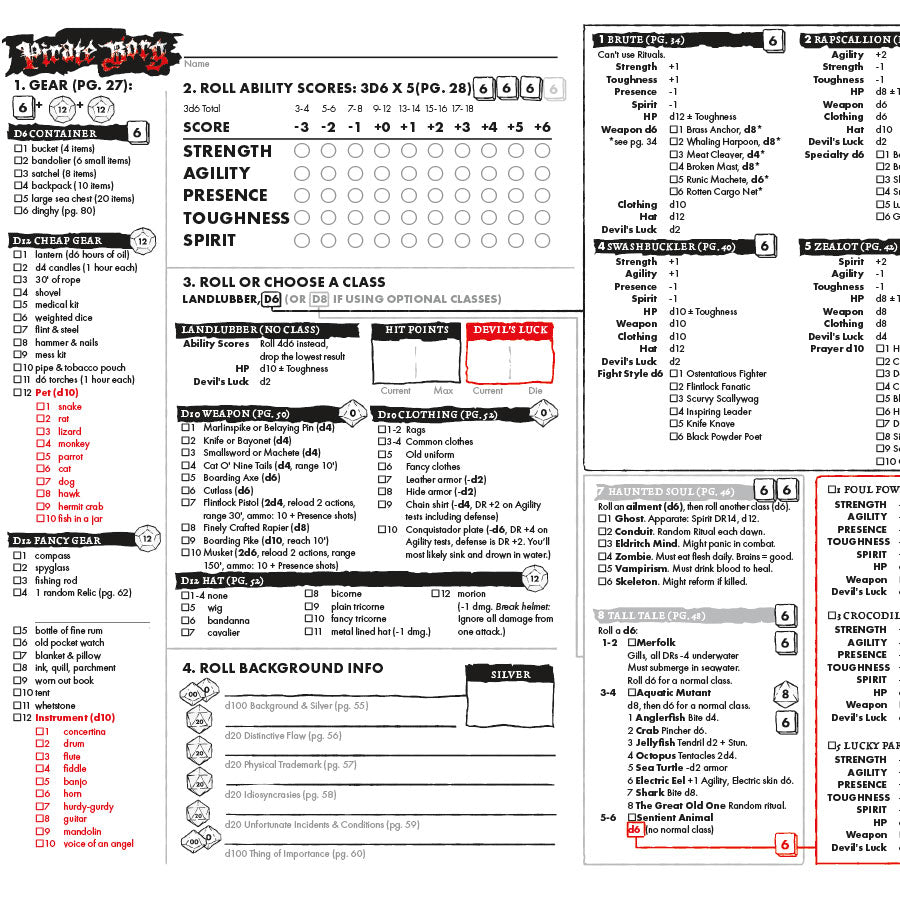
Written by Luke Hart
Whenever I go to conventions, I make a point of playing games that I’ve never played before – or at least ones I don’t get to play that often, but that I really like. Call of Cthulhu was a focus for awhile, last year at GaryCon I played a couple games of Castles & Crusades, this year at GaryCon it was Dungeon Crawl Classic, and then at Gen Con I was able to get in on a game of Pirate Borg and Mothership.
And I’ve now begun to join some online games through Start Playing—recently I’ve played Shadowdark, which quite frankly, is probably going to be the next game system I try out for my inperson game with my friends. Right now I’m running Pathfinder 2 for them all, but when that wraps up, I have a feeling we’ll be giving Shadowdark a spin. Of course, I recently picked up the Call of Cthulhu starter set…so, the jury may still be out.
You see, I used to ONLY play D&D, and up until say 5 or so years ago, had never played any other game system. Which I think is kind of crazy since there are so many other awesome TTRPGs out there, but whatever, that’s where my brain was. But the thing is, now that I’m trying other game systems out more and more, I’m being exposed to different ways of designing a game, different mechanics, and just different things in general. And all of that’s really cool, but recently when I was playing Pirate Borg and Mothership, I was struck by something, and I came to the conclusion that all characters sheets really should work like theirs do.
Watch or listen to this article by clicking the video below.
Now, see, this right here is the Pirate Borg character sheet, and even if you’ve never played before, you can create your own character with almost no help. The character sheet literally walks you through character creation.

To determine your gear, roll a d6, a d12, and a second d12, and then check the boxes off. That’s your starting gear! Ability scores: roll 3d6 for each score, and fill in the score based on the guidelines right there on the sheet.
Background, class, hit points, weapon, hat—which is a category itself, by the way, because your hat is an indispensable part of being a pirate—the character sheet walks you through everything. There are only a couple places where you actually need to reference some tables in the rule book. Everything else is done ON THE CHARACTER SHEET! And when you do need to look at the rule book, the page numbers are all listed on the character sheet. That’s a big-brain move right there. Very nice.
I had only played Pirate Borg once before, and it was late super late at GaryCon, I was exhausted, and consequently I remembered very little about how to make a character, but by simply following the instructions on the character sheet, I was able to do it with almost no help from the game master. Who, by the way, sat nearby, mostly just waiting for everyone to make their characters, while answering an occasional question.
Imagine a game of D&D where most of the players are newbies—the game master is going to be BUSTING HIS BUTT to help all the players out, and it’s going to take at least an hour before folks are ready to play. Not with Pirate Borg. Character creation took about 10 minutes, and we were ready to rock and roll.
As I mentioned, I’ve been playing lots of Pathfinder 2 recently, and when a character dies, it’s no small ordeal. Creating a new character can TAKE SOME TIME, and that’s using online character creation tools to expedite the process. It’s gotten to the point for my PF2e game that I’m a player in that I’ve simply asked the GM if he’s okay if my character is one of seven twins. That way, when my character—a paladin—dies, I can just bring in one of her sisters. Frankly, I’m sick of spending an hour or more creating a new character. I know that some people LOVE creating characters, but that’s not usually me. I’m there to play the game, and while creating a cool character can be fun, there gets a point where you just want to play the game, you know?
This right here is the Mothership character sheet, and it’s much the same. It walks you through creating your character. There was only one part where I needed to look at the rulebook, when I was determining Loadout, Trinket, and Patch, if I remember correctly. Otherwise, all I needed was the character sheet to create my character.

So, what’s the big deal, you may be asking yourself. So, some games have more complicated characters and character sheets. Why is one better than the other? I’m glad you asked!
First, if you’re running a game for new players—especially ones that are new to tabletop roleplaying games in general—a streamlined character creation process is really what you want. It smooths and facilitates a player’s entry into the game, and gets them up and playing quickly. When there is tons of friction, and rules, and possibly confusion right up front—while creating the character and before you can even start playing—that can be a real turnoff to players. They may think, “shoot, if creating a character is this hard, imagine playing the game!”
And, you know, they are kind of right, which brings me to my next point. Many times, games that have streamlined character creation processes also have streamlined rules in general. We call these rules light games. Pirate Borg and Mothership are rules-light games, and I would also classify Shadowdark as rules light. D&D 5e is NOT by any stretch of the definition rules light, and Pathfinder 2 is even less rules light than D&D.
The thing is that rules-light games are EXCELLENT for introducing new players into the hobby. It streamlines the process, reducing friction, and gets them into playing the game and having fun as quickly as possible. And since the gameplay rules are simpler and there are fewer of them, it makes it easier for everyone to play. Yes, the GM needs to make more adjudications and rules calls, but I certainly don’t mind that. It’s certainly better and more fun than digging through a rulebook for 20 minutes to find an answer.
Honestly, it’s kind of a shame that D&D is the most popular game out there—and not because it’s not the “best” game, whatever that means. It seems like people are always so quick to jump into the comments saying stuff like “there are other games WAY BETTER than D&D out there” and the like, but those are just your OPINIONS. What constitutes the “best game” for one person is unique to that person.
The reason it’s a shame that D&D is the most popular game is that due to that popularity, it’s often the first game folks who’ve never played a TTRPG try. And, frankly, I don’t think it should be. As a game master of nearly 30 years, I can tell you that if I had to run a TTRPG for a group of brand spanking new players, it wouldn’t be D&D. It would be something like Shadowdark or Pirate Borg or Mothership. And not because I hate rules-heavy games like D&D and Pathfinder 2e—far from it, I still play those games and have tons of fun. It’s just that rules-light games are generally BETTER for new players than rules-heavy games for a variety of reasons, many of which we’ve already touched on.
The other great benefit of rules-light games is that they allow you to focus more on roleplaying—and remember, when I say “roleplaying” I’m not just talking about talking in character; that’s just ONE aspect of roleplaying which also includes combat, exploration, and lots of other elements. Remember, the ENTIRE GAME is roleplaying. You see, in a rules light game, you focus on what your character says and does, and then you use mechanics as needed, or the GM adjudicates and decides what happens. A pitfall I’ve seen with rules-heavy games like D&D and Pathfinder is that they can often focus too much on mechanics—because there are rules for almost everything—and then you end up in a situation where roleplaying is limited by those mechanics. It doesn’t always happen, but it can.
The next reason that I love character sheets like those of Pirate Borg or Mothership is that WHEN I DIE, it makes it easy create a new character. Now, if you’ve ever had me in one of your games, you’ll know that I am a reckless and careless player is more apt to get my character killed than pretty much anything else. I usually churn through characters! So, when I need to create a new one, I want that process to be as quick and easy as possible.
This also makes it better for the game master and other players. They can just keep on playing the game, and BOOM, ten minutes later, you’re ready with your new PC, and the GM can slip you back into the game.
Furthermore, this allows the game master to run gritter more deadly games if that’s their jam. One of the problems with running a gritty, deadly, D&D 5e or Pathfinder 2 game is that when a character dies, IT’S A BIG DEAL. The player may have invested HOURS into creating the character, more HOURS playing it at the table, and now creating a new character will be more HOURS. When it takes you just ten minutes to create a new character, your investment is less, and if that character dies, it’s easier to just let go, make a new one, and keep playing.
What’s the Deal with All the Missing Rules for 5e?
Are you frustrated that there are some big gaps in the 5e core game system since entire rulesets seem to be missing?
Believe me, we feel your pain. That’s why, in the Big Ruleset Bundle, we have created several lightweight rulesets to fill in the gaps that the 5e designers left behind:
- Mass Combat
- Sieges
- Hexcrawls
- Points of Interest
- Advanced Poison
- Hexes
- Curses
- Crafting
- And more
Remember, these rules are lightweight, meaning it won’t take you and your players ages to read and learn them!
So, if you’re tired of having to homebrew your own rules or make on-the-spot adjudications when these situations arise, pick up the Big Ruleset Bundle. Don’t spend another second wondering why it isn’t in the core rulebook.
Also, if you’re looking for information on running Skill Challenges in 5e—another mechanic oddly missing from the game—check out our article on How to Run Skill Challenges in D&D 5e.
-
Posted in
Game Master How-To Articles



